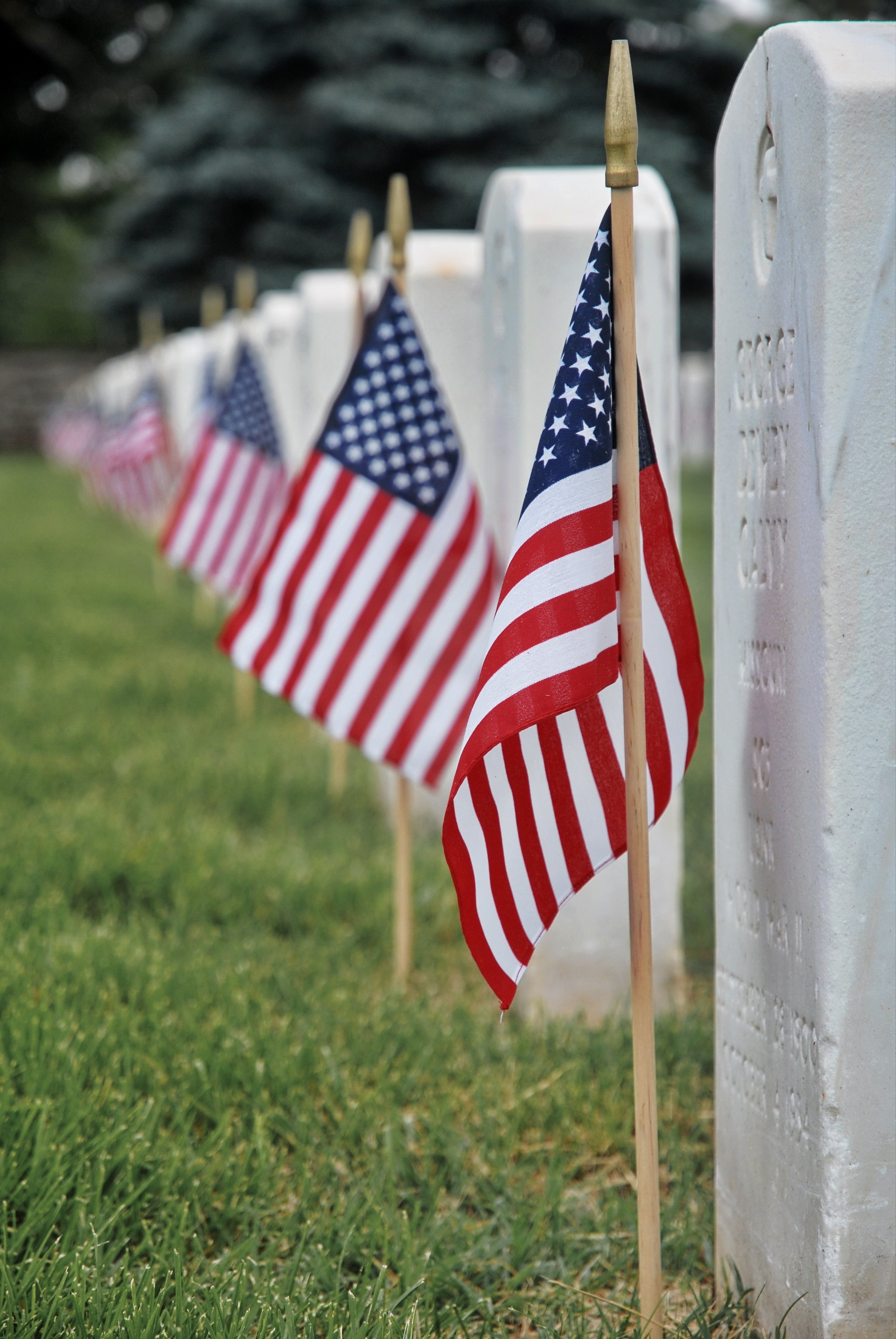The Origins of Memorial Day
by Leslie Parsons
“This is the day we pay homage to all those who didn’t come home. This is not Veterans Day, it’s not a celebration, it is a day of solemn contemplation over the cost of freedom.” -Tamra Bolton, Parade magazine
In February 1862, Mary Ann Williams’ husband died. Mary Ann was the daughter of a soldier and the wife of another. Her husband, Charles, served in the Mexican-American war and was later elected to serve in Georgia’s House of Representatives. When war broke out between the Union and the Confederacy in 1861, Charles Williams joined the Confederate Army but was forced to return to his home in Columbus, Georgia after becoming ill in the winter of 1862. After his death, Mary Ann visited his grave frequently and became inspired by her daughter’s suggestion that they decorate Charles’ grave—and the graves of other soldiers—with flowers. In 1866, in her role as Secretary of the Ladies Memorial Association, Mrs. Williams wrote a letter to her local newspaper, encouraging residents of Columbus to set aside one day a year to decorate the soldiers' graves.
Thus began one of the oldest traditions associated with Memorial Day.
Every year, people all across the United States—regardless of political, religious, or social affiliation—recognize the last Monday in May as Memorial Day. On this day, Americans take a moment to honor the sacrifices made by those who lost their lives while serving in the U.S. Armed Forces.
Unlike Veterans’ Day and National Armed Forces Day, which offer civilians the opportunity to thank and celebrate those who serve and have served in our nation’s military, Memorial Day is intended to be a poignant day of national reflection, meant to encourage both ordinary people and those in power to recognize the price paid for the freedoms we enjoy in this country.
The true origins of Memorial Day (originally known as Decoration Day) can be traced to the aftermath of the American Civil War, when local communities around the country were looking for ways to commemorate those who had fallen in battle. Although there are many communities that claim to have held the first “real” Memorial Day, the occasion first received national attention in 1868, when Commander in Chief John A. Logan of the Grand Army of the Potomac officially designated May 30th as a day of remembrance to honor Union soldiers who died during the war.
However important and meaningful that occasion was, it was merely the first step in a long march towards official recognition. This began in 1873, when New York became the first state to officially dedicate a holiday to the memory of fallen soldiers. Eventually, other states around the country began doing the same.
During the 20th century, states and communities expanded their Memorial Day observations to include soldiers who died during all of our country’s armed conflicts. A movement to gain federal recognition and to standardize the date gained traction. In 1971, Congress officially recognized the last Monday in May as Memorial Day and established it as a federal holiday.
After Mary Ann Williams wrote her local paper encouraging civilians to dedicate a day to remembering the soldiers who died in the Civil War, other newspapers throughout the South began to help spread the word. The idea became so popular that newspapers as far north as Boston and New York made mention of it. While there are many who can take at least some credit for the development of Memorial Day as we know it, in 2022, the National Cemetery Administration, which is a division of the Department of Veterans Affairs, recognized Mary Ann Williams as being the first person in the United States to organize the placing of flowers on the graves of dead soldiers—a tradition that many still observe today.
If you would like to learn more about The True North Foundation, please visit our website and sign up for our newsletter. Also, if you found this article to be inspiring or informative, please share it with your friends, families, and colleagues.


